The Australian Beef Market in 2025: An Absolute Cracker
In this column in July, the StoneX H2 2025 Australian Cattle & Beef Market Outlook’s bold calls were analysed and assessed for what the final 6...
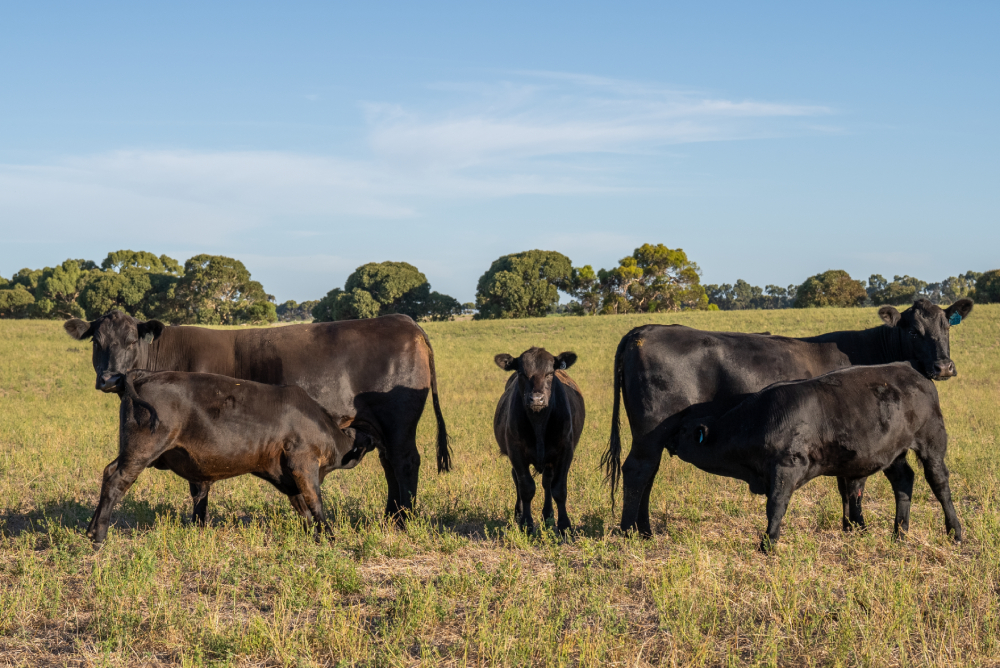
An analysis of AuctionsPlus transactions against the MLA’s National Feeder Steer Indicator show when premiums and discounts are most likely.
We have looked at a few livestock categories on AuctionsPlus versus various Meat & Livestock Australia (MLA) saleyard indicators and one category we were queried on recently was how prices for Angus Feeder Steers on AuctionsPlus stack up against the MLA National Feeder Steer Indicator. More specifically, the question asked was “do the normal premiums that Angus cattle achieve across the board hold for feeder steer types?”
Earlier analysis from November 2023 on the Angus premium versus other cattle breeds highlighted that Angus cattle of all types (steers, heifers, cows, weaners, etc) achieve price premiums between 4% to 18% and have earned an average premium of around 10% over the 2016 to 2023 period.
In this analysis we compared average weekly pricing for Angus cattle 400+kg liveweight steers and the MLA National Feeder Steer Indicator. As the price chart below shows the AP Angus steer generally holds a premium over the MLA National Feeder Steer, although there have been brief occurrences where it has slipped to a discount.
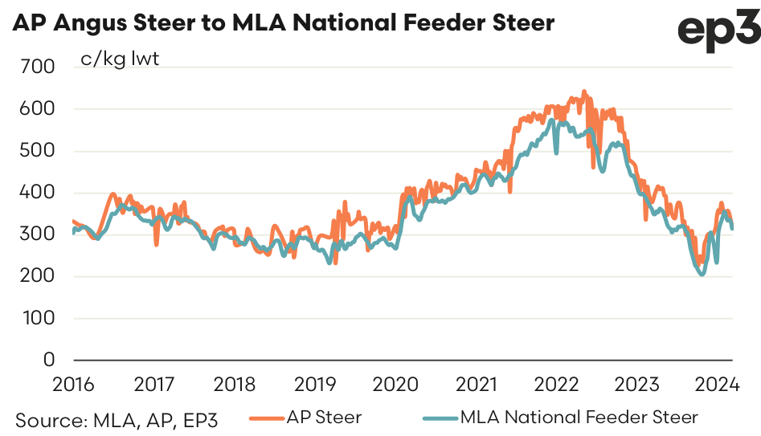
Assessment of the price spread in cents per kilogram shows most of the time is spent in premium territory, with the long term average premium from 2016 to present sitting at 28 cents. The spread can vary week to week, sometimes moving to a discount of around 50 cents at the extremes but it doesn’t usually last for long. Most of the time the AP Angus Steer sits between parity to a 50 cent premium, but there have been several times where the premium has widened to 100 cents and once where it peaked nearer to 150 cents.
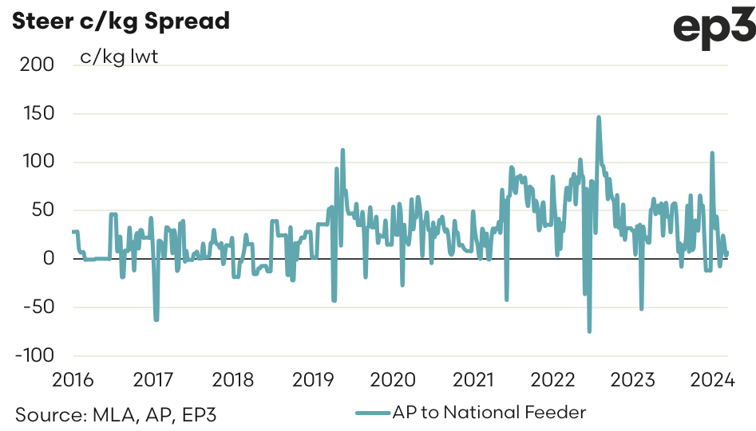
A fairer measure of the spread is using percentages rather than cents per kilogram. Analysis on the percentage spread shows the long term average sits at 8%, which isn’t far off the 10% long term premium spread achieved by Angus cattle more generally as outlined in our November 2023 analysis.
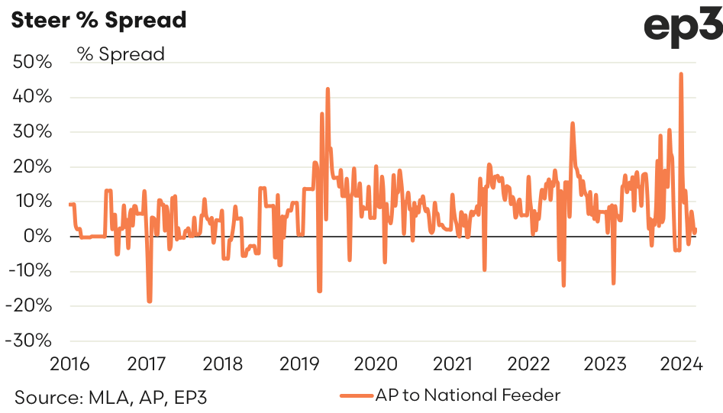
On a percentage spread basis, most of the time has been spent between parity to 20% premiums with a few instances of the spread premium widening to around 45% at a peak. Discounts in percentage terms are limited to around 15%, don’t last for more than one week and are often back to a more normal premium the following week.
A look at the spread through the season on a cents per kilogram and percentage basis shows a tendency for seasonal peaks to occur during the middle of the year and narrower premium spreads more common at the start and end of the season. Additionally, thin markets at the start and end of the year and during holiday shortened weeks can introduce increased volatility in spread behaviour with January 2024 as a prime example of spread volatility.
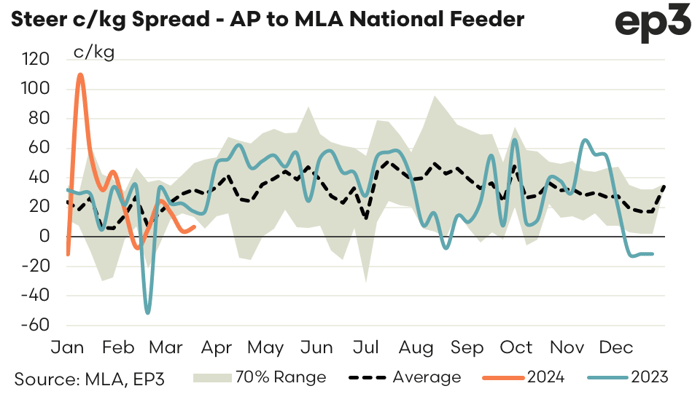
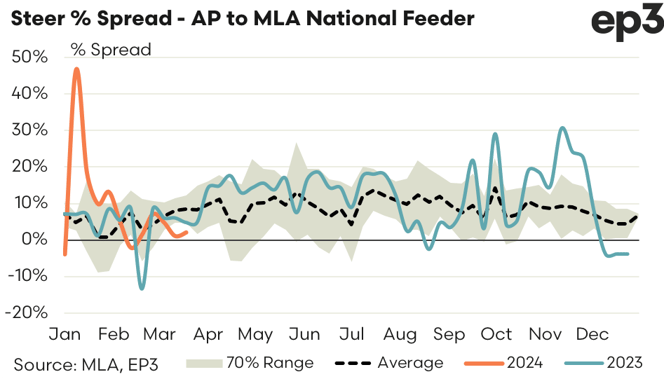
.jpg)
In this column in July, the StoneX H2 2025 Australian Cattle & Beef Market Outlook’s bold calls were analysed and assessed for what the final 6...
.png)
Each December we save the last article of the year for a bit of a crystal ball gaze, as we try to bring together market fundamentals and work out...
.png)
Australia’s wool market posted another strong performance this week, with all micron categories attracting solid support across the three selling...